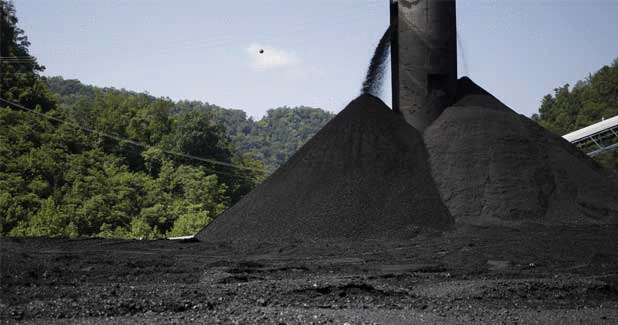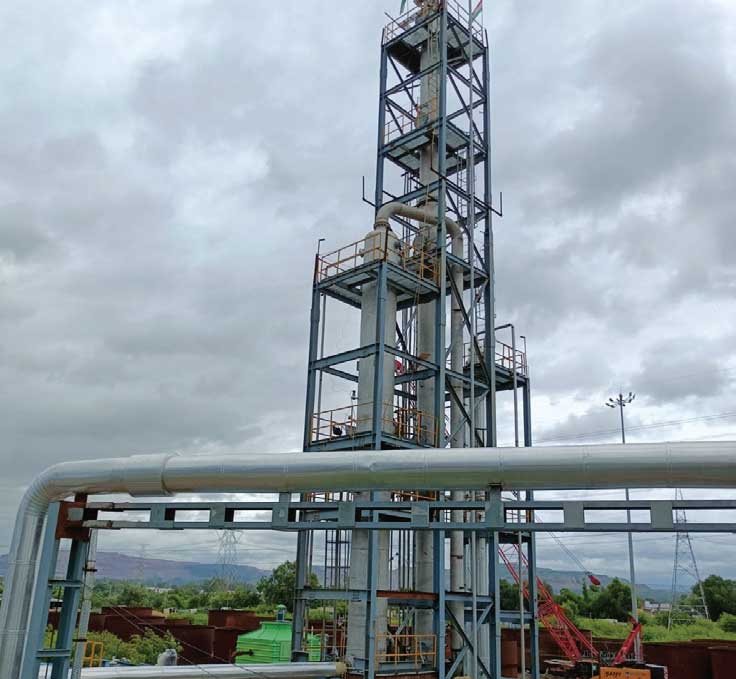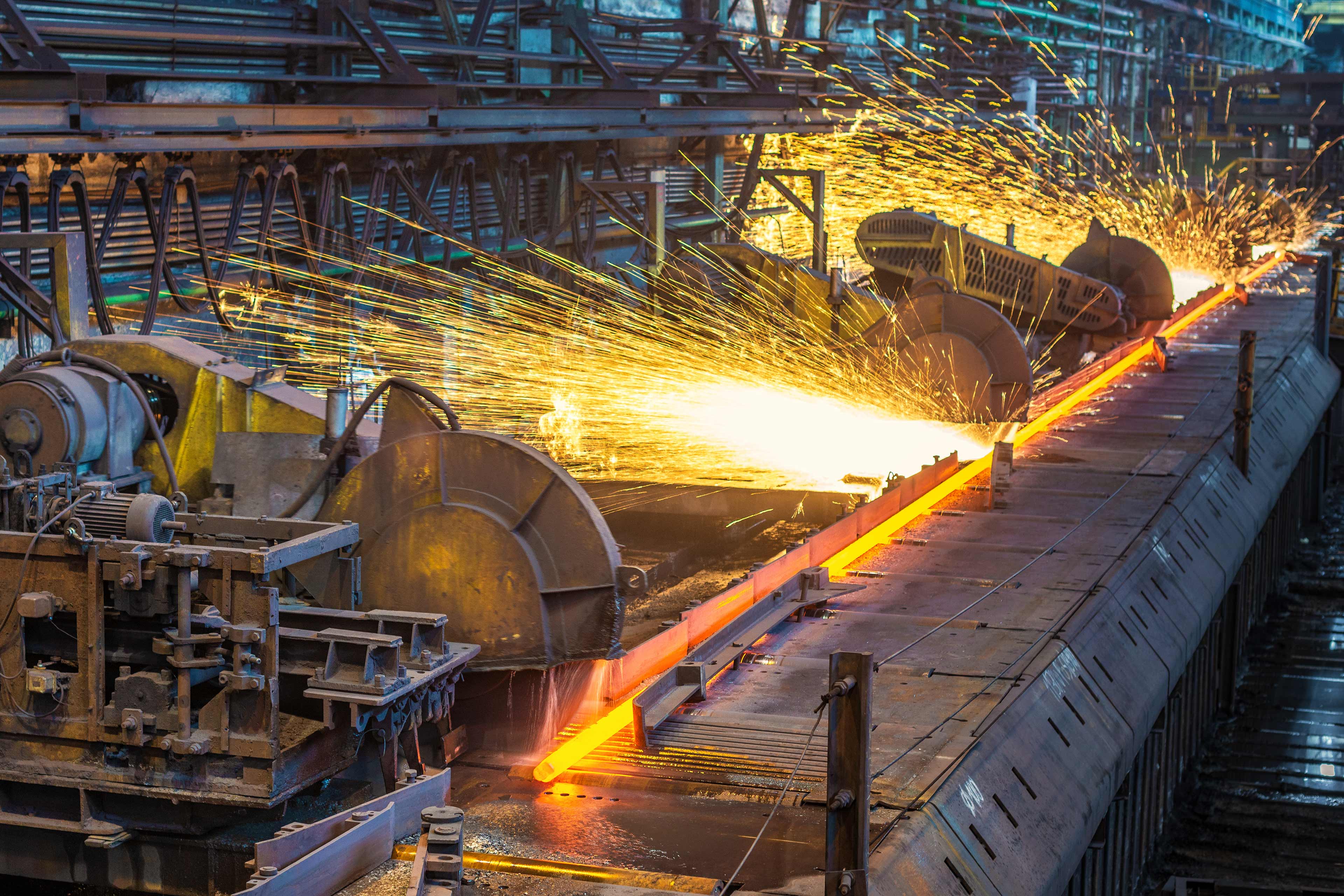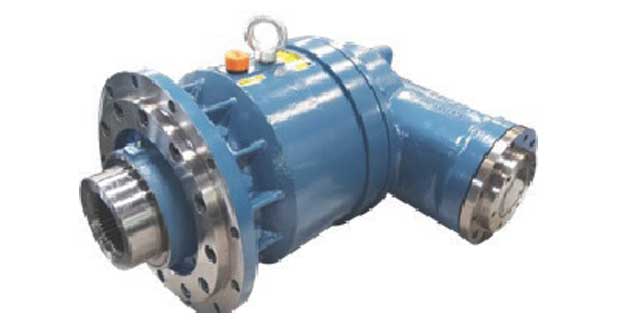Product development
Multi-fuel kilns come of age
Published
5 years agoon
By
admin
Fluctuations in prices of various fuels and regulatory pressures are making manufacturers to choose machines that can be adapted to various fuels based on cost and other advantages.
Coal has the special distinction of being at the same time the fuel and a raw material for production of clinker, the cement intermediate. As much as 25 per cent of the manufacturing cost of cement could be coal. Coal is also used as fuel for power plants by the captive power producers in the cement industry.
Petcoke is a key raw material for producing clinker (primary raw material for manufacturing cement). Clinker production accounts for a majority of fuel consumption in cement industry. Petcoke, which is also a feedstock, has a larger overall share and coal as a key fuel for power plants accounts for the remaining fuel consumption. "Both coal and petcoke together account for an average 85-90 per cent of the total fuel requirement of the cement industry," says Ashish K Nainan of CARE Ratings. As such, fluctuation in the prices of these fuels has the potential to affect the cost and profitability of cement companies.
Renewable energy, power from waste and other non-conventional power sources account for almost 10 per cent of the fuel and power requirement of the industry. Coal plays dual role because, in the cement kiln, when pulverised coal is fired through the burners, it provides energy needed for the chemical calcinations reactions, and then the combustion residue of coal with all its silica, iron oxides, and other compounds, add to the cementatious properties of the end-product. To this, if we were to add that most cement plants in India run coal-fired captive power plants for much of their power needs, the role of coal in cement industry gets further enlarged.
Precautions
The fuel mix depends on the kilns technological acceptability towards a particular fuel source – either a coal based kiln or a multi fuel kiln. Most of the cement manufacturers are taking several factors into consideration in order to take advantage of price fluctuations of various fuels they can use in their kilns. That is where adoption of multi fuel technologies coming in handy.
"Nowadays most of the cement manufacturers have a multi fuel facility, cement manufacturers benefit from having a multi fuel kiln for the simple reason they have a flexibility to switch between different fuel sources depending on the cost (INR/Kcal) dynamics. For example from 1HFY17 to 1HFY18, the delta between pet coke prices and coal prices were as high as 30-40 paise, thus it made sense to use pet coke, however this narrowed out from 1HFY18 to 5-10 paise, and in some cases coal were cheaper source thus making coal more lucrative," says Shochis Natrajan, Analyst (Corporate Ratings), India Ratings and Research (Fitch Group).
Besides, the manufacturers have to take precautions towards ensuring regulatory compliance relating to environmental protection, while adopting a particular fuel.
On environmental consideration, regulatory or judicial interventions could be very disruptive, like petcoke ban implemented in the past which had a major impact on large number of players in the sector. "Fuels like coal and petcoke have this major drawback wherein restrictions especially judicial interventions pose a major challenge for the sector. The industry has to work towards finding alternatives or substitute some of these fuels used for manufacturing as well as improve the overall efficiency in usage and minimize wastage," says Nainan.
"The other key challenge is prices of commodity and currency movements. Cement is more of a commodity and thus, passing on costs, especially in competitive market conditions is quite difficult," Nainan adds citing how prices of crude and coal globally have impacted the margins of the industry in FY19 (2018-19). Additionally, it is the availability of these fuels as in case of domestic coal and their transportation costs or availability of rakes too impacts its users.
The petcoke dilemma
The major environmental concern of the traditional fuels like coal and pet coke is the high carbon emission during the manufacturing process. The sector contributes considerably towards carbon emission among manufacturing industries (approximately 3-4 per cent globally). Since emissions are highly regulated, there are enough measures and safeguards already implemented by cement manufacturers in the industry, but there is always scope to improve by following the highest global standards like in some European nations.
Petcoke is preferred due to its high carbon content, with higher calorific value (over approximately 7,500 Kcal/kg), which makes it a much more economical fuel for the cement manufacturers and they also blend it with coal to improve energy production.
However, the major downside is sulphur content in low quality petcoke (approximately 8-25 per cent), which is highly-polluting and also causes formation of a layer of sulphur, which leads to higher maintenance/downtime of cement plants.
Over the last few years, consumption of pet coke has spiked in India, driven particularly by the cement industry, and also by some of the power generating stations, and imports have sharply increased as well. Many cement factories have been spending considerable amount of time and money to learn how to use more and more pet coke in their kilns without destabilising their chemical processes.
In the wake of its adverse impact on environment, the focus of regulators on high-sulphur petcoke increased, resulting in the state of Delhi and the National Green Tribunal banning use of furnace oil and pet coke in states neighbouring the capital region, a couple of years’ back. After hectic lobbying, there was a relaxation for cement kilns, given its capacity to burn pet coke in an environment-friendly manner.
But the relaxation came with a suggestion to nudge the government to discourage pet coke use, including considering a ban on its imports, which were equal to the then domestic production of 12 million tonnes. The import ban has resulted in domestic supplier jacking up prices.
"Considering the coal and pet coke price inflation, renewable and waste heat energy is preferred over traditional thermal captive power plant or grid purchase. Amongst renewable and waste heat, it depends on the waste heat generated by the cement plant if waste heat generation is higher then waste heat recovery system is preferred else renewable," says Natrajan.
The way forward
Coal India reached extremely close to its production target of 610 million tonne (MT) for 2018-19 and posting a 7 per cent growth in production to 606.9 MT of coal. Thus, it posted a three-fold growth in production compared to 2017-18 output growth of 2.4 per cent. The Ministry of Coal has set a production target of 655 MT for Coal India for the current fiscal.
Singareni Collieries Company’s (SCCL) production stood at 57.94 MT in the 11 months to February 2019 against the target of 65 MT for 2018-2019. The coal production of captive mines during the 11 months period was 44.41 MT compared to a target of 40 MT for the fiscal, achieving a growth rate of 31.6 per cent year-on-year. Commissioning of three crucial railway tracks – Jharsuguda-Sardega railway line, Tori-Shivpur line in Jharkhand and Connector in Chhattisgarh – the East Corridor and East-West Corridor – this year will increase the CIL’
India’s coal imports are still high at 233.56 million tonnes in 2018-19, up nearly 9 per cent, according to a mjunction report. Despite having reserves that are equal to 43 years of current consumption as part of the natural endowments, India still remains import dependent for this crucial fuel, mainly due to slow growth in production in available mines. With coal import trend expected to continue as power, cement and steel industries are expected to create more demand for coal, the government has to evolve strategies to improve energy security by tapping domestic coal reserves. CIL earmarks 10 per cent of its production for e-auction and though e-auction has proved to be a mutually beneficial option for both CIL and the end users initially, e-auction prices rose about 53 per cent in the December quarter of FY19, when the company offered only half the quantity it did a year ago, after diverting supplies to power plants. That kind of ad-hoc paring of supplies have to be avoided as they are expected to hurt the industry in general and cement manufacturers in particular, as they are not part of the priority sector for coal supplies.
– BS SRINIVASALU REDDY
You may like

Advertising or branding is never about driving sales. It’s about creating brand awareness and recall. It’s about conveying the core values of your brand to your consumers. In this context, why is branding important for cement companies? As far as the customers are concerned cement is simply cement. It is precisely for this reason that branding, marketing and advertising of cement becomes crucial. Since the customer is unable to differentiate between the shades of grey, the onus of creating this awareness is carried by the brands. That explains the heavy marketing budgets, celebrity-centric commercials, emotion-invoking taglines and campaigns enunciating the many benefits of their offerings.
Marketing strategies of cement companies have undergone gradual transformation owing to the change in consumer behaviour. While TV commercials are high on humour and emotions to establish a fast connect with the customer, social media campaigns are focussed more on capturing the consumer’s attention in an over-crowded virtual world. Branding for cement companies has become a holistic growth strategy with quantifiable results. This has made brands opt for a mix package of traditional and new-age tools, such as social media. However, the hero of every marketing communication is the message, which encapsulates the unique selling points of the product. That after all is crux of the matter here.
While cement companies are effectively using marketing tools to reach out to the consumers, they need to strengthen the four Cs of the branding process – Consumer, Cost, Communication and Convenience. Putting up the right message, at the right time and at the right place for the right kind of customer demographic is of utmost importance in the long run. It is precisely for this reason that regional players are likely to have an upper hand as they rely on local language and cultural references to drive home the point. But modern marketing and branding domain is exponentially growing and it would be an interesting exercise to tabulate and analyse its impact on branding for cement.
Concrete
Indian cement industry is well known for its energy and natural resource efficiency
Published
1 year agoon
November 18, 2022By
admin
Dr Hitesh Sukhwal, Deputy General Manager – Environment, Udaipur Cement Works Limited (UCWL) takes us through the multifaceted efforts that the company has undertaken to keep emissions in check with the use of alternative sources of energy and carbon capture technology.
Tell us about the policies of your organisation for the betterment of the environment.
Caring for people is one of the core values of our JK Lakshmi Cement Limited. We strongly believe that we all together can make a difference. In all our units, we have taken measures to reduce carbon footprint, emissions and minimise the use of natural resources. Climate change and sustainable development are major global concerns. As a responsible corporate, we are committed with and doing consistent effort small or big to preserve and enrich the environment in and around our area of operations.
As far as environmental policies are concerned, we are committed to comply with all applicable laws, standards and regulations of regulatory bodies pertaining to the environment. We are consistently making efforts to integrate the environmental concerns into the mainstream of the operations. We are giving thrust upon natural resource conservation like limestone, gypsum, water and energy. We are utilising different kinds of alternative fuels and raw materials. Awareness among the employees and local people on environmental concerns is an integral part of our company. We are adopting best environmental practices aligned with sustainable development goals.
Udaipur Cement Works Limited is a subsidiary of the JK Lakshmi Cement Limited. Since its inception, the company is committed towards boosting sustainability through adopting the latest art of technology designs, resource efficient equipment and various in-house innovations. We are giving thrust upon renewable and clean energy sources for our cement manufacturing. Solar Power and Waste Heat Recovery based power are our key ingredients for total power mix.
What impact does cement production have on the environment? Elaborate the major areas affected.
The major environmental concern areas during cement production are air emissions through point and nonpoint sources due to plant operation and emissions from mining operation, from material transport, carbon emissions through process, transit, noise pollution, vibration during mining, natural resource depletion, loss of biodiversity and change in landscape.
India is the second largest cement producer in the world. The Indian cement industry is well known for its energy and natural resource efficiency worldwide. The Indian cement industry is a frontrunner for implementing significant technology measures to ensure a greener future.
The cement industry is an energy intensive and significant contributor to climate change. Cement production contributes greenhouse gases directly and indirectly into the atmosphere through calcination and use of fossil fuels in an energy form. The industry believes in a circular economy by utilising alternative fuels for making cement. Cement companies are focusing on major areas of energy efficiency by adoption of technology measures, clinker substitution by alternative raw material for cement making, alternative fuels and green and clean energy resources. These all efforts are being done towards environment protection and sustainable future.
Nowadays, almost all cement units have a dry manufacturing process for cement production, only a few exceptions where wet manufacturing processes are in operation. In the dry manufacturing process, water is used only for the purpose of machinery cooling, which is recirculated in a closed loop, thus, no polluted water is generated during the dry manufacturing process.
We should also accept the fact that modern life is impossible without cement. However, through state-of-the-art technology and innovations, it is possible to mitigate all kinds of pollution without harm to the environment and human beings.
Tell us about the impact blended cement creates on the environment and emission rate.
Our country started cement production in 1914. However, it was introduced in the year 1904 at a small scale, earlier. Initially, the manufacturing of cement was only for Ordinary Portland Cement (OPC). In the 1980s, the production of blended cement was introduced by replacing fly ash and blast furnace slag. The production of blended cement increased in the growth period and crossed the 50 per cent in the year 2004.
The manufacturing of blended cement results in substantial savings in the thermal and electrical energy consumption as well as saving of natural resources. The overall consumption of raw materials, fossil fuel such as coal, efficient burning and state-of-the-art technology in cement plants have resulted in the gradual reduction of emission of carbon dioxide (CO2). Later, the production of blended cement was increased in manifolds.
If we think about the growth of blended cement in the past few decades, we can understand how much quantity of , (fly ash and slag) consumed and saved natural resources like limestone and fossil fuel, which were anyhow disposed of and harmed the environment. This is the reason it is called green cement. Reduction in the clinker to cement ratio has the second highest emission reduction potential i.e., 37 per cent. The low carbon roadmap for cement industries can be achieved from blended cement. Portland Pozzolana Cement (PPC), Portland Slag Cement (PSC) and Composite Cement are already approved by the National Agency BIS.
As far as kilogram CO2 per ton of cement emission concerns, Portland Slag Cement (PSC) has a larger potential, other than PPC, Composite Cement etc. for carbon emission reduction. BIS approved 60 per cent slag and 35 per cent clinker in composition of PSC. Thus, clinker per centage is quite less in PSC composition compared to other blended cement. The manufacturing of blended cement directly reduces thermal and process emissions, which contribute high in overall emissions from the cement industry, and this cannot be addressed through adoption of energy efficiency measures.
In the coming times, the cement industry must relook for other blended cement options to achieve a low carbon emissions road map. In near future, availability of fly ash and slag in terms of quality and quantity will be reduced due to various government schemes for low carbon initiatives viz. enhance renewable energy sources, waste to energy plants etc.
Further, it is required to increase awareness among consumers, like individual home builders or large infrastructure projects, to adopt greener alternatives viz. PPC and PSC for more sustainable
resource utilisation.
What are the decarbonising efforts taken by your organisation?
India is the world’s second largest cement producer. Rapid growth of big infrastructure, low-cost housing (Pradhan Mantri Awas Yojna), smart cities project and urbanisation will create cement demand in future. Being an energy intensive industry, we are also focusing upon alternative and renewable energy sources for long-term sustainable business growth for cement production.
Presently, our focus is to improve efficiency of zero carbon electricity generation technology such as waste heat recovery power through process optimisation and by adopting technological innovations in WHR power systems. We are also increasing our capacity for WHR based power and solar power in the near future. Right now, we are sourcing about 50 per cent of our power requirement from clean and renewable energy sources i.e., zero carbon electricity generation technology. Usage of alternative fuel during co-processing in the cement manufacturing process is a viable and sustainable option. In our unit, we are utilising alternative raw material and fuel for reducing carbon emissions. We are also looking forward to green logistics for our product transport in nearby areas.
By reducing clinker – cement ratio, increasing production of PPC and PSC cement, utilisation of alternative raw materials like synthetic gypsum/chemical gypsum, Jarosite generated from other process industries, we can reduce carbon emissions from cement manufacturing process. Further, we are looking forward to generating onsite fossil free electricity generation facilities by increasing the capacity of WHR based power and ground mounted solar energy plants.
We can say energy is the prime requirement of the cement industry and renewable energy is one of the major sources, which provides an opportunity to make a clean, safe and infinite source of power which is affordable for the cement industry.
What are the current programmes run by your organisation for re-building the environment and reducing pollution?
We are working in different ways for environmental aspects. As I said, we strongly believe that we all together can make a difference. We focus on every environmental aspect directly / indirectly related to our operation and surroundings.
If we talk about air pollution in operation, every section of the operational unit is well equipped with state-of-the-art technology-based air pollution control equipment (BagHouse and ESP) to mitigate the dust pollution beyond the compliance standard. We use high class standard PTFE glass fibre filter bags in our bag houses. UCWL has installed the DeNOx system (SNCR) for abatement of NOx pollution within norms. The company has installed a 6 MW capacity Waste Heat Recovery based power plant that utilises waste heat of kiln i.e., green and clean energy source. Also, installed a 14.6 MW capacity solar power system in the form of a renewable energy source.
All material transfer points are equipped with a dust extraction system. Material is stored under a covered shed to avoid secondary fugitive dust emission sources. Finished product is stored in silos. Water spraying system are mounted with material handling point. Road vacuum sweeping machine deployed for housekeeping of paved area.
In mining, have deployed wet drill machine for drilling bore holes. Controlled blasting is carried out with optimum charge using Air Decking Technique with wooden spacers and non-electric detonator (NONEL) for control of noise, fly rock, vibration, and dust emission. No secondary blasting is being done. The boulders are broken by hydraulic rock breaker. Moreover, instead of road transport, we installed Overland Belt Conveying system for crushed limestone transport from mine lease area to cement plant. Thus omit an insignificant amount of greenhouse gas emissions due to material transport, which is otherwise emitted from combustion of fossil fuel in the transport system. All point emission sources (stacks) are well equipped with online continuous emission monitoring system (OCEMS) for measuring parameters like PM, SO2 and NOx for 24×7. OCEMS data are interfaced with SPCB and CPCB servers.
The company has done considerable work upon water conservation and certified at 2.76 times water positive. We installed a digital water flow metre for each abstraction point and digital ground water level recorder for measuring ground water level 24×7. All digital metres and level recorders are monitored by an in-house designed IoT based dashboard. Through this live dashboard, we can assess the impact of rainwater harvesting (RWH) and ground water monitoring.
All points of domestic sewage are well connected with Sewage Treatment Plant (STP) and treated water is being utilised in industrial cooling purposes, green belt development and in dust suppression. Effluent Treatment Plant (ETP) installed for mine’s workshop. Treated water is reused in washing activity. The unit maintains Zero Liquid Discharge (ZLD).
Our unit has done extensive plantations of native and pollution tolerant species in industrial premises and mine lease areas. Moreover, we are not confined to our industrial boundary for plantation. We organised seedling distribution camps in our surrounding areas. We involve our stakeholders, too, for our plantation drive. UCWL has also extended its services under Corporate Social Responsibility for betterment of the environment in its surrounding. We conduct awareness programs for employees and stakeholders. We have banned Single Use Plastic (SUP) in our premises. In our industrial township, we have implemented a solid waste management system for our all households, guest house and bachelor hostel. A complete process of segregated waste (dry and wet) door to door collection systems is well established.
Tell us about the efforts taken by your organisation to better the environment in and around the manufacturing unit.
UCWL has invested capital in various environmental management and protection projects like installed DeNOx (SNCR) system, strengthening green belt development in and out of industrial premises, installed high class pollution control equipment, ground-mounted solar power plant etc.
The company has taken up various energy conservation projects like, installed VFD to reduce power consumption, improve efficiency of WHR power generation by installing additional economiser tubes and AI-based process optimisation systems. Further, we are going to increase WHR power generation capacity under our upcoming expansion project. UCWL promotes rainwater harvesting for augmentation of the ground water resource. Various scientifically based WHR structures are installed in plant premises and mine lease areas. About 80 per cent of present water requirement is being fulfilled by harvested rainwater sourced from Mine’s Pit. We are also looking forward towards green transport (CNG/LNG based), which will drastically reduce carbon footprint.
We are proud to say that JK Lakshmi Cement Limited has a strong leadership and vision for developing an eco-conscious and sustainable role model of our cement business. The company was a pioneer among cement industries of India, which had installed the DeNOx (SNCR) system in its cement plant.
Concrete
NTPC selects Carbon Clean and Green Power for carbon capture facility
Published
2 years agoon
October 12, 2022By
admin
Carbon Clean and Green Power International Pvt. Ltd has been chosen by NTPC Energy Technology Research Alliance (NETRA) to establish the carbon capture facility at NTPC Vindhyachal. This facility, which will use a modified tertiary amine to absorb CO2 from the power plant’s flue gas, is intended to capture 20 tonnes of CO2) per day. A catalytic hydrogenation method will eventually be used to mix the CO2 with hydrogen to create 10 tonnes of methanol each day. For NTPC, capturing CO2 from coal-fired power plant flue gas and turning it into methanol is a key area that has the potential to open up new business prospects and revenue streams.

JK Cement Boosts Production Capacity with New Production Line at Panna Plant

Making durable concrete by using ternary blend

Ultratech sources VRM from Gebr. Pfeiffer

RAHSTA to showcase cutting-edge road construction tech, says NCC Director

RAHSTA will drive road construction innovation: Sundaresan

Environment Ministry revises rules of solid waste management

M-sand boards new terrain
Concrete: A Highly Sustainable Building Material

Process and quality optimization in cement plant.

















